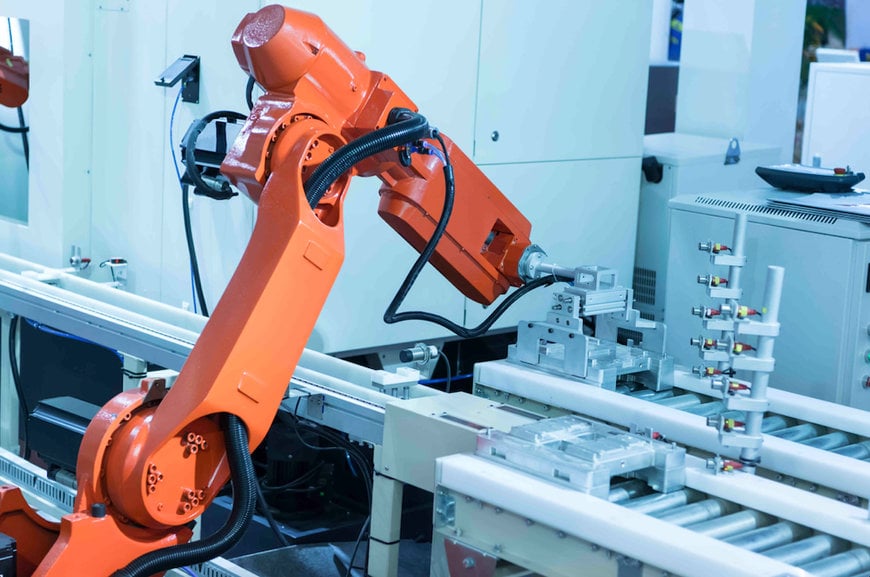www.magazine-industry-usa.com
09
'23
Written on Modified on
Robotics Integration for Manufacturing Efficiency and Productivity
Unlocking the Full Potential of Robotics: The Importance of Integrating Robots in Manufacturing Environments - Insights from Stephen Hayes, MD at Beckhoff UK.

Robotic automation has been transforming manufacturing and industrial operations for decades and as technology continues to evolve, the benefits of integrating robotics into control systems are becoming increasingly compelling. According to research undertaken by the International Federation of Robotics, the number of installed robots per 10,000 manufacturing workers in the UK grew by 77 per cent over the last five years, demonstrating a clear trend towards greater adoption of automation technology in the manufacturing sector.
Integrating robots into a control system offers a myriad of benefits, with increased efficiency and productivity being one of the most significant. Robots excel at performing repetitive tasks much faster than humans, leading to faster turnaround times and more efficient use of resources. Automation helps eradicate bottlenecks, reduces cycle times, and increases overall production capacity, resulting in a streamlined manufacturing process that minimise waste and maximise productivity.
Moreover, robotic automation ensures higher quality control by performing tasks with greater precision and consistency than human workers. Robots maintain strict tolerances, perform quality inspections and measurements and quickly identify defects, thereby reducing the risk of errors and enhancing product quality. With human error minimised, businesses can produce higher-quality products, resulting in better customer satisfaction and improved brand reputation.
An easy way of integrating robots into manufacturing lines is to implement a modular approach using motion control solutions — like Beckhoff’s Automation Technology for Robotics (ATRO) — so that machine builders can secure a complete automation solution from a single source. This technology is specifically designed for robotic applications, offering high-performance and precise motion control capabilities. The system consists of a range of hardware and software components that work together to achieve high levels of accuracy and repeatability in motion control.
One of the key features is their ability to integrate with a wide range of robotic systems, including articulated robots, cartesian robots, and SCARA robots. This makes it a versatile solution that can be used in a variety of industrial applications, allowing real-time motion control, high-speed data transfer, and flexible programming options.
Using a motion control system to integrate robotics into a manufacturing line ensures that all software and hardware components are optimally matched, from the machine's power supply to cobot-enabled modules, and all functions such as robotics, vision, safety, cloud robotics, and machine learning are fully integrated on a single control platform and architecture, enabling direct combination with intelligent transport solutions.
This allows for the configuration of a powerful and comprehensive package with maximum output and leads to extremely compact machine designs with a significantly reduced footprint — all components are fully synchronised, and even highly dynamic pick-and-place applications are possible, with movement occurring on the fly.
The ATRO system is built on Beckhoff's TwinCAT software platform, which provides a wide range of programming options and tools for motion control. This software platform allows for the creation of custom motion control algorithms, as well as the integration of other automation systems, such as vision systems and sensor networks. The software also includes a range of diagnostic tools for monitoring and troubleshooting the system.
By integrating robots with other equipment and processes, businesses can reduce the risk of downtime and errors, optimise the production line, and enhance overall efficiency. Seamless integration of robots with other equipment increases operational accuracy, reducing the risk of defects and ensuring that products meet or exceed customer expectations. Integrating both robots and other manufacturing line assets together creates a powerful, precise, scalable, and reliable environment.
www.beckhoff.com

